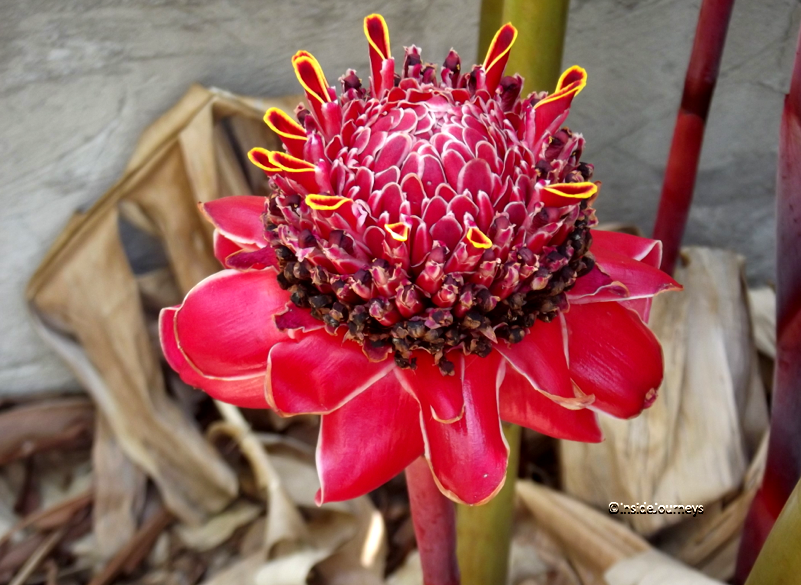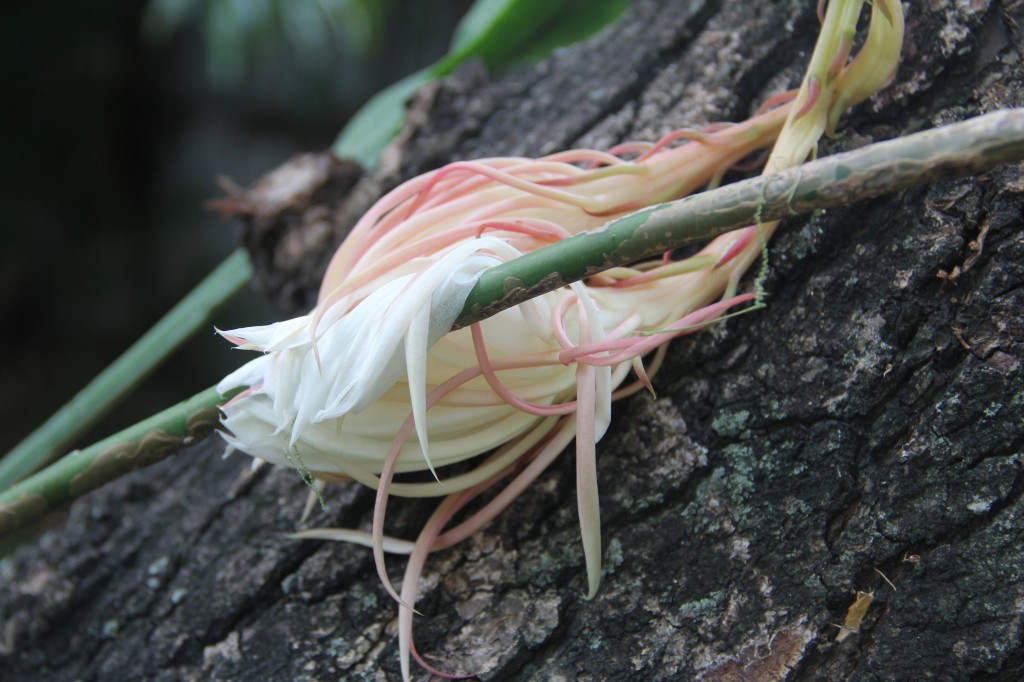I saw the starfish flower for the first time a few years ago in St. Elizabeth, Jamaica. I didn’t know its name and everyone I showed the photo to, shook their heads. They didn’t know either. All I knew for sure was that the stems made me think it had to be from the cactus family. I also knew that I was intrigued by the shape and squiggly lines.

A few weeks ago, I was visiting a friend. As we sipped lemonade and chatted on her verandah, she stopped mid sentence, “Smell that?” she asked, furrowing her brow.
“No. What?”
“There, don’t you see it?”
I looked in the direction she’d pointed, the place she insisted the odor was coming from. But all I saw was lush, green foliage. Nothing seemed out of place or able to produce the foul smell she alluded to. I didn’t see or smell anything offensive and told her so. But it didn’t seem to reassure her.
“Don’t you see that yellow flower, the one that looks like a large star?”
By now I could hear tension creeping into her voice. I felt at any moment, she’d spring from her seat to seek out the odor that was preventing her from enjoying her lemonade.
Later, as I was leaving, as if to vindicate herself, she pointed out the plant. Even though I was now closer, I still couldn’t smell it but I recognized it as the same one I had admired and had been unable to identify years earlier. When I asked, she said it was the starfish flower.
The starfish is a variety of carrion flower. These flowers produce a putrid odor, probably from the insects that pollinate them, that some say is similar to rotting flesh. I’m not sure why I didn’t smell it. I also wondered why my friend had it in her garden if she didn’t like the smell. Maybe, I though as I walked through her gate, its beauty makes up for its smell – sometimes.
This post is linked to Travel Photo Discovery’s Travel Photo Mondays. Be sure to head over and check out other photos from around the world.




















































